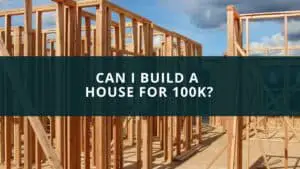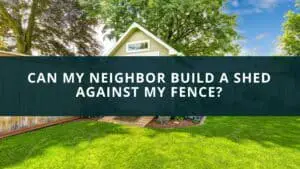Mexico is a beautiful place to live. While it has its issues, such as crime rates and natural disasters, it boasts wonderful weather and a beautiful environment. It’s the kind of place you want to spend the winter when it’s all cold and dreary in the US because it’s usually sunny here. So, how much is a house in Mexico?
The average cost of a house in Mexico is around 2.5 million pesos which is equivalent to $128,000. However, the actual price varies based on factors such as the neighborhood comps, living space, age and condition of the house, location, and safety. Mexico City has the most expensive houses here.
When looking for a home in Mexico, especially as an expat, you must consider all these factors before picking a residence. Of course, homes in Mexico are much cheaper than those in the US, but you should also be selective in terms of location. Here, we discuss the cost of a house in Mexico and the factors that determine the actual value.
Cost of House in Mexico
The typical home value in Mexico as of February 2022 is 2,544,899 pesos which are equivalent to $128,009. This represents a 13.9% increase in the past year and only accounts for the median value. The value of homes in the country has increased gradually in the past few years. In terms of average, Mexicans spent 1.3 million pesos to own a residential property in the first quarter of 2021. That was 15% more than what they spent in 2020. The rising prices of homes in the country are mostly due to the increased demand. House ownership is very common in the country, with 69% of all Mexican households owning their homes while only 17% renting.
Quick navigation
Factors Affecting the Prices of Homes in Mexico
The value of homes in Mexico differs significantly based on various factors. For anyone planning to buy a house here, it’s important to know all these factors and how they influence home prices. That’ll help them know whether a house is selling for its real value or is overpriced. The factors include:
1. Neighborhood Comps
One of the major factors that determine the price of a house is demand and, in this case, the sale price of similar homes in the same neighborhood. Looking at the value of comparable homes in the neighborhood can help you estimate how much a house should be worth. Whether it’s a simple home appraisal or a real estate agent evaluation, these comps are very important in estimating the value of a home. Such appraisal and evaluation will usually consider recency, distance, location, and similarity in features between the houses arriving at an estimate. Of course, no two houses are the same. This is why such evaluation works best with many data and analyzing several similar homes that fall within the same range.
2. Location
In Mexico, the prices of homes vary significantly based on the house’s location. Houses in certain cities are more expensive than others for obvious reasons, and the same thing further extends to neighborhoods. Mexico City has the most expensive real estate market in the country, with the average price of homes here being over 3 million pesos as of 2021. Other cities with expensive housing markets include Queretaro, Morelos, Jalisco, and Baja California Sur. The location also extends to neighborhoods. Even in Mexico City, there are neighborhoods where homes cost over 5 million pesos. Location influences cost because it determines the economic and employment opportunities, the schools, and the entertainment options available around a residence. It also affects other infrastructures such as transportation.
3. Space
The cost of homes in Mexico also varies based on the size of the house. Single-family homes are quite common in Mexico, but the bigger the house and usable space, the more you can expect to spend. HomeHome valuations usually involve calculating the price per square footage, which means the more square feet a house has, the higher the price. Of course, the price per square foot in Mexico City won’t be the same as what you’ll get in Durango. Beyond the available space, livable space also matters. This is the most important thing to look out for and generally doesn’t include the attics, garages, unfinished basements, etc. Usually, the more bedrooms and bathrooms a house has the higher its value. But this is still very dependent on the location.
4. Age and Condition of House
Are you thinking of buying a house in Mexico, the age of the house matters in determining its cost? Usually, the older the house, the lower the cost. But this is so because there’s a higher chance of an old house needing repairs. So the conditions of the house will matter more than the age of the house. Essential parts of the house such as the roof, electrical connections, appliances, and plumbing are better as new as they’re less likely to break down then. Even if they’re to break down, they usually have warranties, making it cheaper for a buyer to fix the problem. Thus, beyond making sure of the age of the house, it helps to get an expert house inspector to check the house and determine what needs fixing there before even considering buying.
5. Safety
When buying a house in Mexico, you need to pay attention to the safety metric. This generally affects the cost of homes in the country. Generally, most of Mexico is quite safe. But there are some high-crime areas where foreigners are especially unsafe. In most of these unsafe areas, the price of homes is usually lower than what you’ll get in safer areas. The fall in the price of homes in unsafe areas usually comes from the lower demand for homes in those areas. A study discovered that people tend to change residencies more often in areas with high homicide rates. The more frequent violent crimes occur in an area, the lower the price of homes in such areas. Homicides related to drug violence in Mexico significantly affect the migration patterns in Mexico.
In Conclusion
Homes in Mexico are very affordable, with the average price of homes, even in the most expensive parts, still costing less than the average in the US. Of course, the cost of homes will depend on several factors. But it’s fairly affordable, thereby encouraging homeownership.



